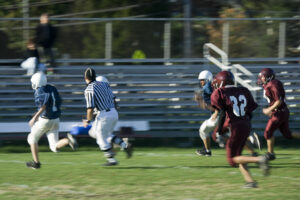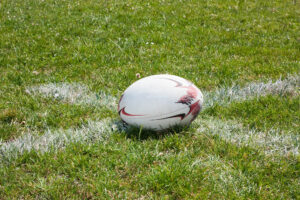The New York Times highlights how children who participate in all youth sports can be affected by concussions.
Recent news regarding long-term brain damage affecting NFL players has prompted parents to analyze how their children can be affected by similar consequences.
The young brain is especially affected by concussions, and sports-related concussions account for more than 50% of all emergency room visits by children aged 8 through 13. According to the article, a child who suffers a concussion is one and a half times more likely to experience another, and those who have had two concussions have a threefold greater risk of the same injury happening again.
Most parents are concerned about enrolling their children in football and soccer where head injuries are common. Concussion fear has led to a decline in youth football according to Pop Warner, the US’s largest youth football program.
But first, it is worth noting that almost no sport is free of a concussion hazard, and that participating in sports has “cognitive, physical, emotional and social benefits that outweigh everything,” said Steven P. Broglio, the director of the Neurotrauma Research Lab at the University of Michigan and the lead author of the National Athletic Trainers’ Association position statement on how best to deal with concussions among young athletes.
Tackle football causes the most concussions among high-school-age athletes. Lacrosse and ice hockey are a close second. Soccer, gymnastics, basketball and even swimming all pose concussion risks.
How to Properly Treat Child Concussions
- Children who sustain concussions shouldn’t return to the game too soon. They need to receive proper treatment and approval from a doctor before heading back to the field. One of the most dangerous effects of failing to detect a concussion and allowing time for a young athlete to recover fully is a second-impact syndrome — rapid, catastrophic swelling of the brain that can cause lifelong impairments, coma and even death — should the athlete have another concussion.
- Concussions need to be called by their proper medical term: mild traumatic brain injuries. Parents will be much more likely to react if they know the seriousness of the injury.
- Parents need to know that their children don’t need to lose consciousness to have sustained a concussion. 90% of concussions involve no loss of consciousness or only a brief disruption of mental alertness.
- Multiple different concussion tests need to be conducted on the sidelines to diagnose concussions properly. The usual five-minute assessment done on the sidelines to check an injured athlete’s ability to orient, remember, concentrate and recall words “misses about 40 percent of concussions,” Dr. Broglio said in an interview. “A single test is not diagnostic and should not be relied on. Multiple different tests taken together can increase the sensitivity to the mid to upper 90s.”
- All concussion symptoms should be reported without delay to a coach, athletic trainer, parent or school nurse. Especially worrisome is a symptom that gets worse with time.
For more information
- Concussions Can Occur in All Youth Sports, The New York Times
- Youth Football Participation Drops, ESPN
- Facts for Physicians About Mild Traumatic Brain Injury (MTBI), Centers for Disease Control and Prevention
- HEADS UP to Youth Sports, Centers for Disease Control and Prevention







